Key takeaways
- A family recipe book is a living legacy that connects generations through stories, flavors, and traditions.
- Gathering and organizing recipes from family members fosters deeper connections and preserves cherished memories.
- Adding personal stories and memories transforms recipes into heartfelt narratives, enhancing their significance.
- Sharing recipes along with anecdotes or tips creates meaningful connections, making the exchange feel special and personal.
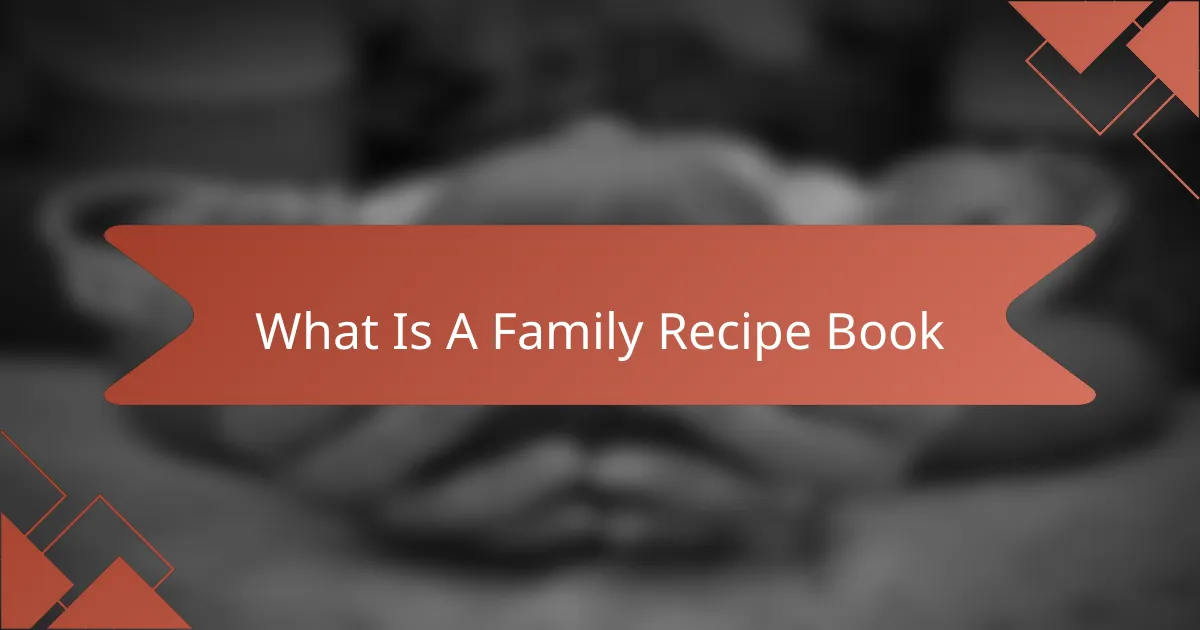
What Is A Family Recipe Book
A family recipe book is more than just a collection of cooking instructions; it’s a tangible piece of our family’s history. I often think about how flipping through its pages feels like hearing my grandmother’s voice guiding me through the kitchen, or recalling holiday meals shared around the table. Isn’t it incredible how a simple recipe can connect generations and preserve moments that otherwise might fade away?
For me, this book holds the essence of tradition, flavor, and love, carefully woven together through handwritten notes and time-tested ingredients. It’s fascinating to realize that each recipe tells a story — a story that goes beyond food and dives into identity and memory. Have you ever wondered why certain dishes instantly make you feel at home?
In essence, a family recipe book serves as a living legacy. It invites everyone in the family to participate in an ongoing narrative, blending old favorites with new twists, so our culinary heritage continues to evolve. It’s a keepsake that nurtures not just our bodies but our bonds as well.
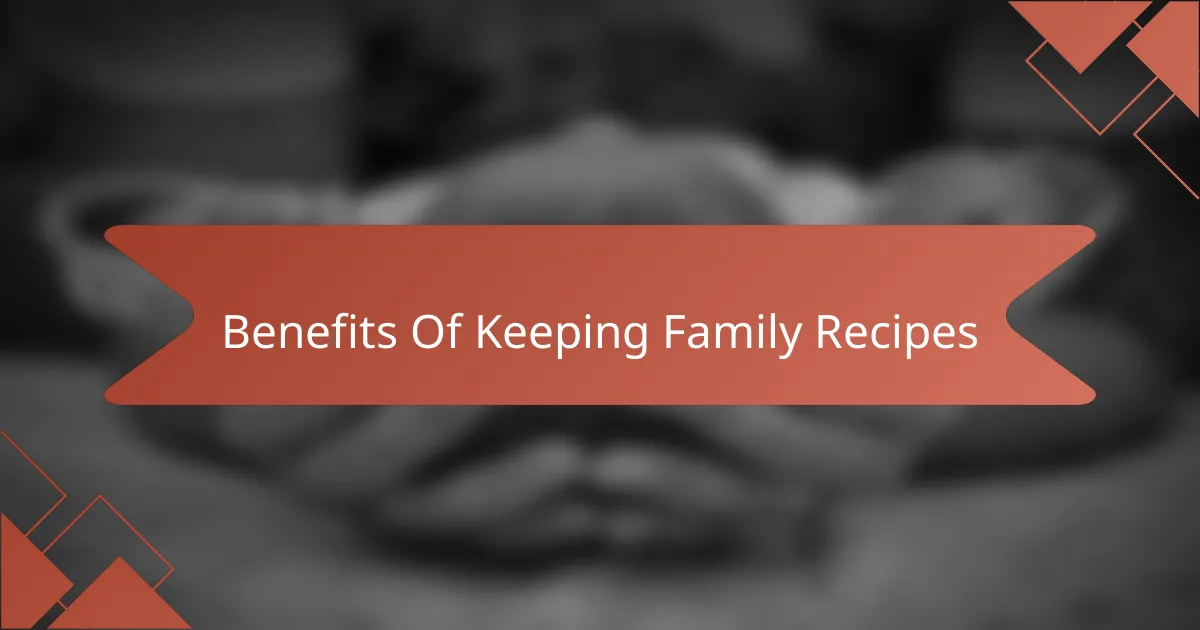
Benefits Of Keeping Family Recipes
There’s something deeply comforting about having a family recipe book at hand. Whenever I pull mine off the shelf, it’s like opening a time capsule filled with flavors and memories that bring my loved ones close, even if they’re far away. Don’t you find that familiar taste can instantly transport you to a cherished moment?
Keeping these recipes preserves more than just instructions; it safeguards family traditions that might otherwise slip away with time. I recall how certain dishes sparked stories from my parents and grandparents, turning meal prep into a heartfelt exchange. When was the last time a meal connected you to your roots so vividly?
Moreover, having a curated collection encourages creativity and continuity in the kitchen. It’s thrilling to experiment with old recipes while adding my own touches, knowing I’m contributing to our family’s evolving story. Have you ever felt proud to carry forward a recipe that’s been cherished for generations?
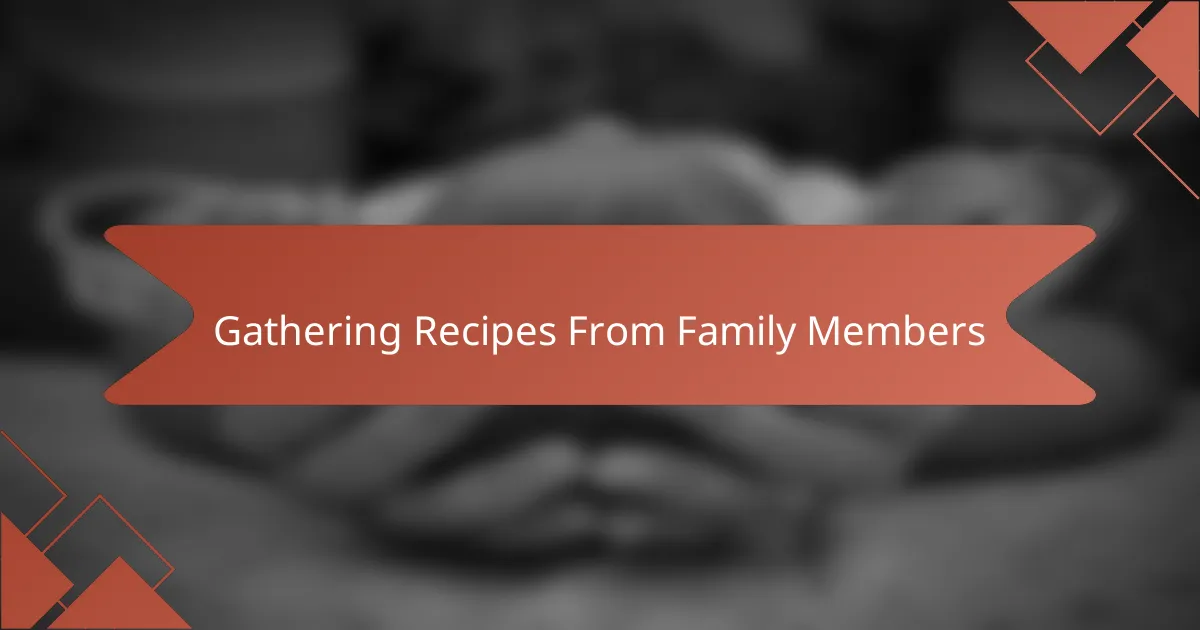
Gathering Recipes From Family Members
Reaching out to family members felt like opening a treasure chest of flavors and memories. I remember calling my aunt one afternoon, and she eagerly shared not just the ingredients for her famous apple pie, but stories about how she perfected it during Sunday dinners. Have you noticed how recipes often come with a side of nostalgia, woven into every instruction?
Some relatives sent recipes scrawled on aging recipe cards stained with years of cooking, while others preferred a quick text or email. Gathering these diverse formats taught me to be patient and flexible, reminding me that each recipe is as unique as the person sharing it. Isn’t it amazing how food can carry pieces of personality and history all at once?
I was surprised at how this process sparked new conversations and deeper connections. When my cousin described the secret family spice blend, it wasn’t just about the recipe—it was a moment of bonding that I hadn’t expected to find through kitchen tables and phone calls. Have you ever discovered family stories hidden in the simple act of asking, “How did you make this?”
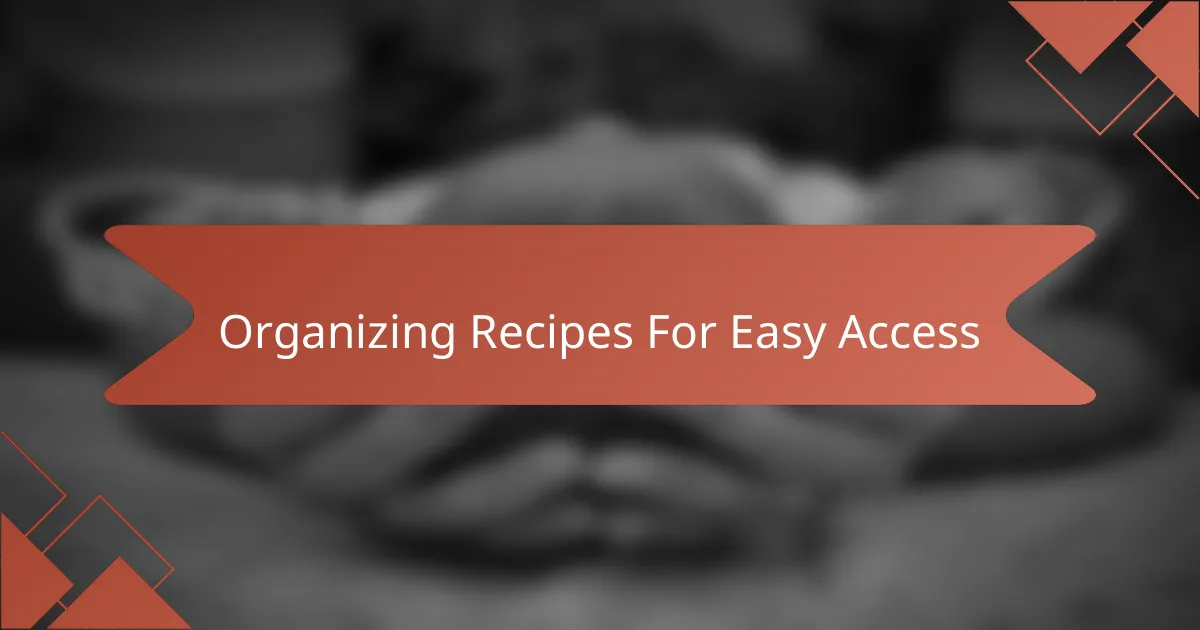
Organizing Recipes For Easy Access
One thing I quickly realized while organizing my recipes was that easy access meant more than just stuffing them into a drawer. I started categorizing them by meal type—breakfasts, dinners, desserts—so I wouldn’t have to dig endlessly when hunger struck. Have you ever scrambled through a pile of papers, wishing for a better system?
Creating tabs and using clear labels became a game-changer for me. It felt like giving each recipe its own little spotlight, making the whole collection feel more inviting and manageable. I found that this small step made cooking less stressful and more joyful—even on busy weeknights.
Another trick I picked up was making a master index, listing recipes and their page numbers for quick reference. This way, I could flip right to grandma’s famous lasagna without wasting precious time. Don’t you love when organization actually saves you time in the kitchen? I certainly do.
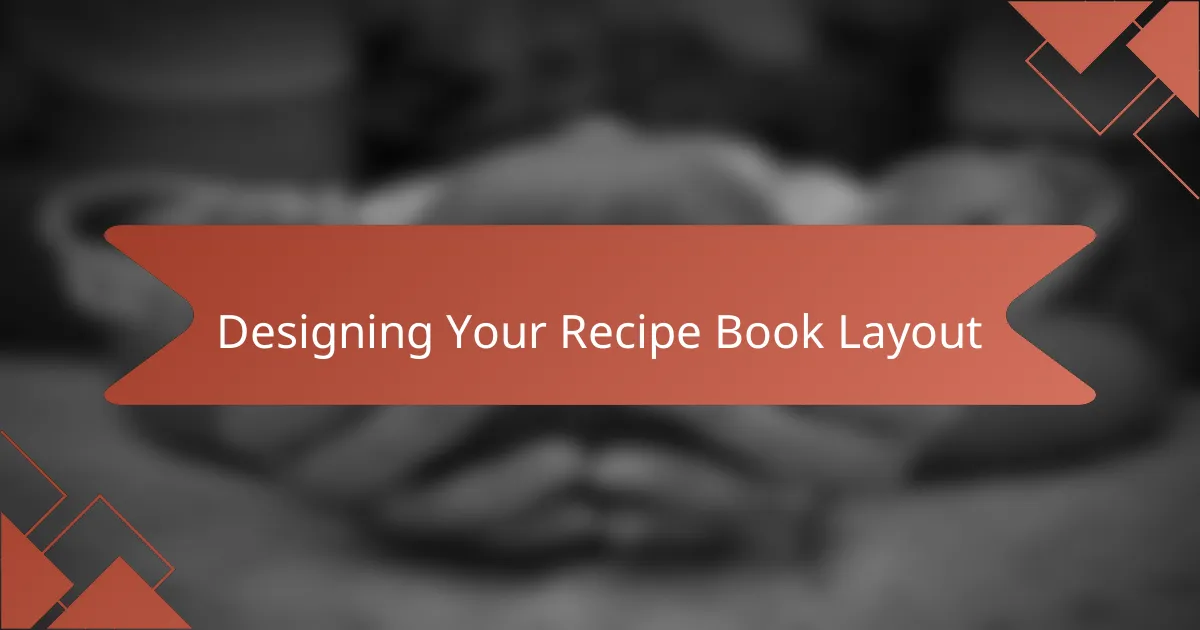
Designing Your Recipe Book Layout
Designing the layout of your recipe book felt like crafting a visual story that complements the flavors inside. I spent time choosing fonts and spacing that made each recipe easy to follow, almost like having a friendly voice guiding me through the steps. Have you ever noticed how a clean, uncluttered page invites you to dive right into cooking without feeling overwhelmed?
I also learned the power of adding little personal touches—like space for notes or family anecdotes beside each recipe. This made the book feel less like a cold manual and more like a warm conversation with the cooks who came before me. It was exciting to see how these design choices could turn the cookbook into a living, breathing family heirloom.
Then came the color palette and images. I picked warm tones that reminded me of cozy kitchens and shared meals, and I included photos that captured moments of cooking together or the finished dishes. Don’t you find that visuals can bring recipes to life, making you almost taste the dish before you even start?
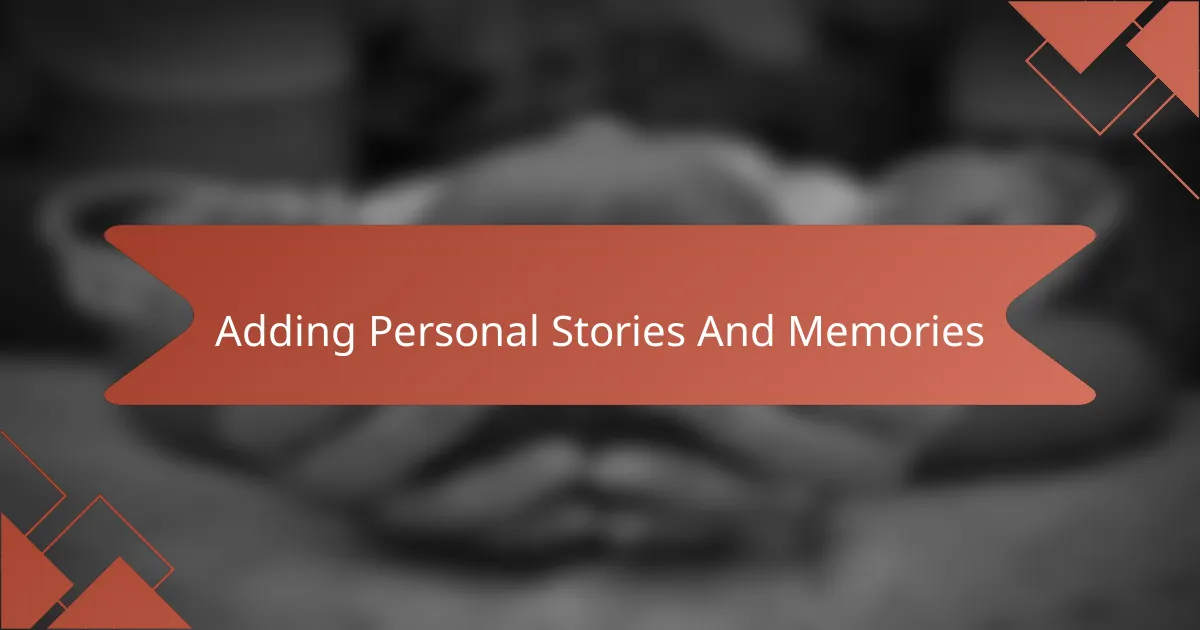
Adding Personal Stories And Memories
Adding personal stories and memories transformed my recipe book from a simple collection into a heartfelt narrative. I found myself jotting down little anecdotes—like the time my uncle accidentally doubled the cinnamon in his spice cake—and suddenly the recipe felt alive, buzzing with personality. Have you ever noticed how sharing a story makes a dish taste even better?
Including memories also means passing down emotions tied to each meal. For instance, my mom’s lasagna recipe comes with a note about how it was our go-to comfort food during challenging times, reminding me that food can heal in more ways than one. Don’t you think recipes become more meaningful when they carry the feelings of those who made them?
Sometimes, these stories sparked unexpected conversations with family. I remember calling my grandmother and hearing her laugh as she recounted funny kitchen mishaps linked to a favorite soup recipe. It’s moments like these that made me realize a family recipe book isn’t just about food—it’s about connection and shared history. Have you experienced this kind of bonding over a simple recipe before?
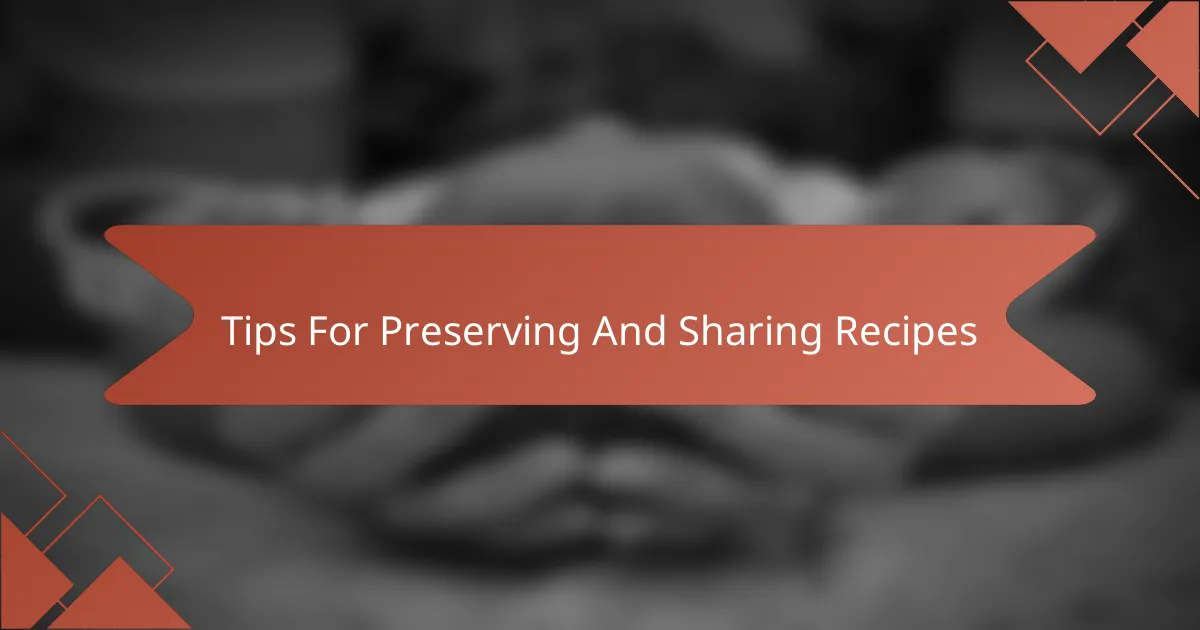
Tips For Preserving And Sharing Recipes
Preserving recipes feels like safeguarding little treasures, doesn’t it? For me, one crucial tip was to scan handwritten recipes and back them up digitally. This way, even if the original fades or gets lost, the memory—and the flavor—stays alive. Have you ever worried about losing that one precious recipe card tucked away somewhere?
Sharing recipes became more meaningful when I included a brief story or cooking tip with each one. It turns a simple instruction into a personal invitation, almost like handing down a secret ingredient through generations. Do you find that stories give recipes an extra layer of warmth and connection?
I also found that creating printable versions of the recipes helped family members who prefer physical copies. Sending these along with a handwritten note made the exchange feel special, not just another file in an inbox. Have you noticed how the simple act of sharing turns a recipe into a cherished bond?